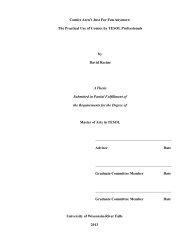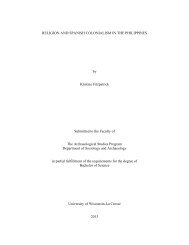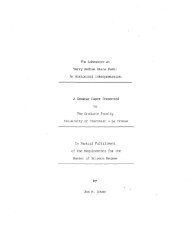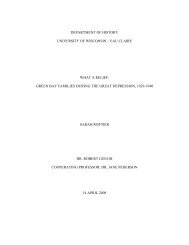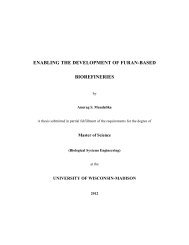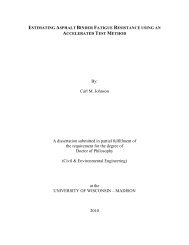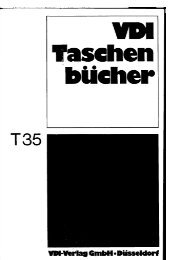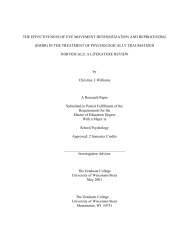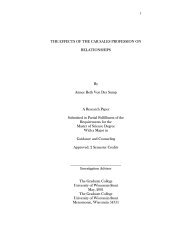William Stratton Ph.D. Thesis - MINDS@UW Home
William Stratton Ph.D. Thesis - MINDS@UW Home
William Stratton Ph.D. Thesis - MINDS@UW Home
You also want an ePaper? Increase the reach of your titles
YUMPU automatically turns print PDFs into web optimized ePapers that Google loves.
Specific Volume<br />
T g<br />
slow<br />
Temperature<br />
T g<br />
fast<br />
T m<br />
Specific heat<br />
Amorphous<br />
solid<br />
Crystal<br />
T g<br />
Supercooled<br />
liquid<br />
T m<br />
Temperature<br />
Liquid<br />
(a) (b)<br />
Figure 1.1: Schematic plots of physical changes associated with Tg. Tg depends on the cooling<br />
rate of the solid, with a faster cooling rate leading to a higher Tg than a slower cooling rate. The<br />
continuous change of the (a) specific volume (first derivative of the Gibbs free energy) and the<br />
discontinuous change of the (b) specific heat (second derivative of the Gibbs free energy) show<br />
that Tg is a second order phase transformation. Between the melting temperature Tm and Tg the<br />
amorphous material is a supercooled liquid, meaning it is below the melting point of the material<br />
but can still flow. Figures adapted from (a) 9 and (b) 10 .<br />
various organic and inorganic materials. Tg is not a fixed material property, as it can change<br />
with the cooling rate 9 or the thermal history of the material 11,12 .<br />
2



